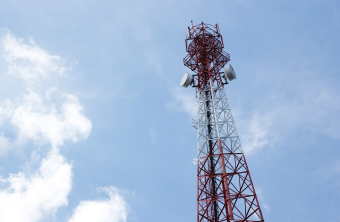

The evolution of telecommunication standards has fundamentally reshaped the way we communicate, providing us with faster, more reliable, and more versatile mobile networks. From the early days of Global System for Mobile Communications (GSM) to the advent of Long-Term Evolution (LTE) and the emergence of 5G, each generation of telecommunication technology has brought significant advancements. This article explores the journey of telecommunication standards, their impact on society, and what the future holds.
The Global System for Mobile Communications (GSM) was the first digital cellular technology that gained widespread adoption. Developed in the late 1980s and launched in the early 1990s, GSM set the foundation for modern mobile telephony. Prior to GSM, mobile communication relied on analog standards like Advanced Mobile Phone System (AMPS), which had limitations in capacity, security, and data transmission capabilities.
With the growing demand for mobile data services, the third generation (3G) of mobile networks was developed. Universal Mobile Telecommunications System (UMTS) and Wideband Code Division Multiple Access (WCDMA) were the key technologies that defined 3G. Launched in the early 2000s, 3G brought significant improvements in data transmission speeds and network capacity.
The fourth generation (4G) of mobile networks, epitomized by Long-Term Evolution (LTE), marked a significant leap forward in mobile communication. Launched in the late 2000s, LTE addressed the growing demand for high-speed mobile internet and multimedia services. It set new benchmarks for data rates, latency, and overall network performance.
The fifth generation (5G) of mobile networks represents the latest advancement in telecommunication technology. Launched in the late 2010s, 5G promises to revolutionize not only mobile communication but also various industries through its enhanced capabilities.
Each generation of telecommunication standards has not only improved the quality and speed of communication but also transformed how we interact with technology and each other. From making international calls with GSM to video conferencing on 3G and 4G, and now experiencing real-time AR/VR with 5G, these advancements have continuously reshaped our digital lives.
The evolution of telecommunication standards has been a catalyst for innovation across various sectors. 4G LTE enabled the rise of mobile apps, social media, and on-demand services like Uber and Netflix. Similarly, 5G is expected to drive innovations in autonomous driving, smart cities, telemedicine, and industrial automation.
Advancements in telecommunication standards have also played a crucial role in bridging the digital divide. By providing faster and more reliable internet access, these technologies have improved access to education, healthcare, and economic opportunities, particularly in underserved and remote areas.
Deploying new telecommunication standards requires significant investment in infrastructure. The rollout of 5G, for example, involves upgrading existing cell sites, building new ones, and deploying small cells to ensure comprehensive coverage and capacity.
The evolution of telecommunication standards has been a catalyst for innovation across various sectors. 4G LTE enabled the rise of mobile apps, social media, and on-demand services like Uber and Netflix. Similarly, 5G is expected to drive innovations in autonomous driving, smart cities, telemedicine, and industrial automation.
Efficient management of the radio spectrum is essential for the successful deployment of new telecommunication standards. Governments and regulatory bodies play a crucial role in allocating spectrum and ensuring its optimal use.
While 5G is still in its early stages of deployment, research and development for 6G are already underway. Expected to be commercially available by the 2030s, 6G will build upon the advancements of 5G, offering even higher speeds, lower latency, and more advanced applications such as holographic communication and integrated AI systems.
The evolution of telecommunication standards has been a catalyst for innovation across various sectors. 4G LTE enabled the rise of mobile apps, social media, and on-demand services like Uber and Netflix. Similarly, 5G is expected to drive innovations in autonomous driving, smart cities, telemedicine, and industrial automation.
The journey from GSM to LTE and beyond highlights the relentless pace of innovation in the telecommunication industry. Each generation of mobile network technology has brought significant improvements in speed, capacity, and functionality, transforming how we communicate and interact with the world. As we look to the future, the continued evolution of telecommunication standards promises to unlock new possibilities, drive technological advancements, and shape the digital landscape in ways we can only begin to imagine.